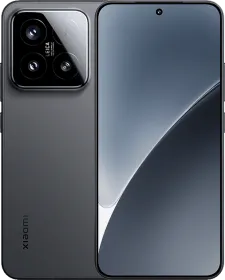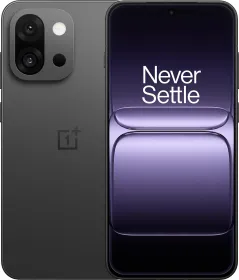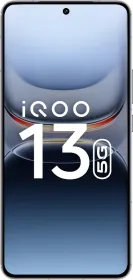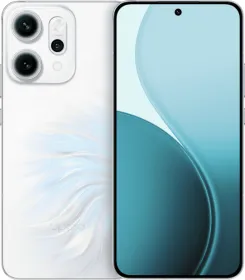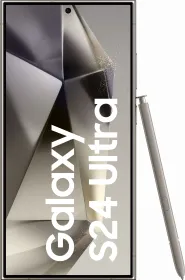The Chinese smartphone manufacturer Xiaomi just released a new Android flagship: the Xiaomi 15. It features the latest Snapdragon 8 Elite (3nm) SoC, has a bright screen, and a triple 50MP camera with an extended zoom range.
Given that the phone offers features similar to those of Samsung’s Galaxy S25, buyers might be confused between the two flagships. If you’re in the market for a top-tier Android flagship, you’ve come to the right place. Here’s a detailed comparison between the Xiaomi 15 and the Galaxy S25.
Also Read: Galaxy A56 5G vs. OnePlus 13R 5G: Which Mid-Ranger Offers More Value For Your Money?
Xiaomi 15 vs. Galaxy S25: Tech Specs
| Xiaomi 15 | Galaxy S25 | |
| Dimensions | 152.3 x 71.2 x 8.08 mm | 146.9 x 70.5 x 7.2 mm |
| Weight | 191 grams | 162 grams |
| Color | Black, White, Green | Navy, Icyblue, Silver Shadow, Mint, Blueblack, Coralred, Pinkgold |
| IP Rating | IP68 | IP68 |
| Display | 6.36-inch LTPO 120Hz AMOLED | 6.2-inch LTPO 120Hz AMOLED 2X |
| Processor | Snapdragon 8 Elite (3nm) | Snapdragon 8 Elite (3nm) for Galaxy |
| Software | HyperOS 2.0 | One UI 7.0 |
| Camera | Rear: 50MP + 50MP + 50MP Front: 32MP | Rear: 50MP + 10MP + 12MP Front: 12MP |
| Battery Capacity | 5,240 mAh | 4,000 mAh |
| Charging Speed | 90W wired, 50W wireless | 25W wired, 15W wireless |
Xiaomi 15 vs. Galaxy S25: Design
Materials

Both the phones feature an aluminum frame and a glass front/back. While the Xiaomi 15 features Xiaomi’s Shield Glass on the front, the Galaxy S25 features Gorilla Glass Victus 2 on the front and the back.
Dimensions & Weight
- Xiaomi 15: 152.3 x 71.2 x 8.08 mm; 191 grams
- Galaxy S25: 146.9 x 70.5 x 7.2 mm; 162 grams
The Galaxy S25 is the slimmer and lighter smartphone of the two. However, it also has a slightly smaller screen (something to keep in mind).
Design

Both flagships have a punch-hole screen and minimal (symmetrical) bezels on the front. On the back, the Xiaomi 15 houses a blacked-out rectangular camera island, while the Galaxy S25 features three lenses protruding from the otherwise uniform back panel. Moreover, both phones follow a minimal design language with premium materials and finish.
Colors
- Xiaomi 15: Black, White, Green
- Galaxy S25: Navy, Icyblue, Silver Shadow, Mint, Blueblack, Coralred, Pinkgold
The Xiaomi 15 is available in more subtle finishes, while the Galaxy S25 follows a varied color pallet.
IP Rating
Both phones have an IP68 dust and water resistance rating (suitable for submersion up to 1.5 meters for 30 minutes).
Also Read: iPhone 16e vs. iPhone 15: 8 Key Differences That You Should Know Before Making A Purchase
Xiaomi 15 vs. Galaxy S25: Display

The Xiaomi 15 houses a 6.36-inch LTPO 120Hz screen with a resolution of 2,670 x 1200 pixels (460 ppi) and a peak brightness of 3,200 nits (25% of the display area). The 12-bit screen can produce 68 billion colors, has a touch sampling rate of up to 300Hz, and supports 1,920 PWM dimming.
Regarding high dynamic range content, the screen is compatible with HDR10, HDR10+, and Dolby Vision content. It also comes with Low Blue Light, Flicker Free, and Circadian Friendly certifications from TUV Rheinland.

On the other hand, the Galaxy S25 sports a slightly smaller 6.2-inch LTPO 120Hz AMOLED 2X screen with a resolution of 2340 x 1080 pixels (416 ppi) and a peak brightness of 2,600 nits. The 8-bit panel can produce 16 million colors and has a touch sampling rate of up to 240Hz. However, it doesn’t support PWM dimming.
The handset’s screen can play HDR10+ content but doesn’t support Dolby Vision. Clearly, Xiaomi has added more features to the Xiaomi 15’s screen, making it a better smartphone screen.
Xiaomi 15 vs. Galaxy S25: Performance

Both the flagships run on Qualcomm’s latest 3nm mobile platform, the Snapdragon 8 Elite SoC. While the chipset’s standard variant on the Xiaomi 15 features two prime cores clocked at 4.32 GHz, the overclocked version on the Galaxy S25 has two 4.47 GHz prime cores.
This might give the Galaxy S25 a slight advantage, but we’ve seen smartphones with Snapdragon 8 Elite’s regular version do better on benchmarks, so we’d like to wait for Xiaomi 15 to appear on GeekBench 6 or AnTuTu 10 before commenting on the same.
Xiaomi has released its latest flagship in one memory and storage variant: 12GB (LPDDR5X) + 512GB (UFS 4.0). In contrast, the Galaxy S25 is available in two memory/storage variants: 12GB + 256GB and 12GB + 512GB (both with LPDDR5X RAM and UFS 4.0 storage).

Besides, both phones feature the Adreno 830 GPU that supports hardware-accelerate ray tracing for realistic lighting and shadows in video games. In simpler words, you should be able to run popular mobile titles like Battlegrounds Mobile India or Call of Duty: Mobile in higher graphics settings without any issues.
Last but not least, the chipset features the Hexagon NPU for handling on-device AI features. Both phones have a heat dissipation system for sustained performance, too. All in all, the handsets are equipped with one of the fastest processors for Android smartphones and should provide top-tier performance, enough to handle heavy multitasking or video editing.
Also Read: iPhone 16e vs. Samsung Galaxy S24 FE: Which One is Better For You?
Xiaomi 15 vs. Galaxy S25: Software

Out of the box, the Xiaomi 15 runs on HyperOS 2 (based on Android 15), which comes with several refinements to the user interface, animations, and efficiency. The operating system also features HyperAI suite of features, including AI Speech Recognition, AI Writing, AI Subtitles, AI Art, AI Gesture Reactions, and AI Search.
Apart from this, Xiaomi has promised to provide four years of major operating system and six years of security updates for the handset.

Conversely, the Galaxy S25 runs on the One Ui 7.0 (based on Android 15), offering many customization options and other UI improvements. However, its biggest highlight remains a comprehensive list of Galaxy AI features: Live Translate, Generative Edit, Note Assist, Instant Slow-Mo, Generative Wallpaper, and cross-app multimodal Gemini voice assistant.
In addition, Samsung promises to support the Galaxy S25 with seven years of operating system and security updates. So, if longevity is your priority, the Galaxy S25 should be among your top considerations.
Xiaomi 15 vs. Galaxy S25: Cameras
Xiaomi 15 Camera Configurations

- Primary Camera: 50MP (f/1.62, 23mm, OIS) Leica Light Fusion 900
- Secondary Camera: 50MP (f/2.0, 60mm, OIS) sensor with 2.6x optical zoom lens that has a focusing distance of 10 cm
- Tertiary Camera: 50MP (f/2.2, 14mm) ultrawide camera with 115° field of view lens
- Front Camera: 32MP (f/2.0, 21mm) selfie camera with 90° field of view
The smartphone can record 8K videos at 30 fps and includes two Leica photographic styles (Authentic and Vibrant), Leica filters, classic chutter sound, Xiaomi ProMotion tracking focus, digital zoom up to 60x, a super macro mode, Ultra Night Video, and log video recording.
Also Read: OPPO Find N5 vs. Samsung Galaxy Z Fold6: Which Foldable is Better For You?
Galaxy S25 Camera Configuration

- Primary Camera: 50MP (f/1.8, 24mm, OIS) primary sensor
- Secondary Camera: 10MP (f/2.4, 67mm, OIS) sensor with 3x optical zoom lens
- Tertiary Camera: 12MP (f/2.2, 13mm) ultrawide sensor with a 120° field of view lens
- Front Camera: 12MP (f/2.2, 26mm) selfie camera
Like the Xiaomi 15, the Galaxy S25 can also record 8K videos at 30 fps and provides several shooting modes like Pro, Expert RAW, Pro Video, Night, and several filters for adjusting the pictures’ color profile and tone. The smartphone also records better low-light videos than its predecessors and features an aperture control button for added control. The phone maxes out at 30x digital zoom.
Xiaomi 15 vs. Galaxy S25: Battery Life And Charging Speed

The Xiaomi 15 ships with a 5,240 mAh battery that supports 90W wired and 50W wireless charging. What’s great is that the handset comes with a 90W charger, saving buyers a couple of thousand bucks.
The Galaxy S25 has a smaller 4,000 mAh battery that supports 25W wired and 15W wireless charging (Qi2 with compatible charging case). Unfortunately, the phone doesn’t come with a charge in the box.
While the Galaxy S25 has the upper hand in terms of software support and AI-based features, the Xiaomi 15 should last longer between charges and spend less time plugged in.
Xiaomi 15 vs. Galaxy S25: Connectivity

Per the Indian specifications page of Xiaomi 15, it comes with 5G, Wi-Fi 6, Bluetooth v6.0 (the first smartphone to support the latest Bluetooth standard), GPS (L1 + L5), NFC, IR Blaster, and a USB Type-C 3.2 Gen 2 port (with support for DisplayPort).
The Galaxy S25 provides 5G connectivity, Wi-Fi 7, Bluetooth v5.4, GPS, NFC, and a USB Type-C 3.2 Gen 1 port (with support for DisplayPort).
Also Read: Phone (3a) vs. Edge 50 Neo vs. realme P3 Pro: Which Mid-Ranger Is Best For You?
Xiaomi 15 vs. Galaxy S25: Price And Conclusion
Xiaomi 15 Price

Given that the Xiaomi 15 has a brighter and better screen, features a powerful chipset, higher-resolution secondary and tertiary cameras, and a faster charging battery, it surely is an all-rounder flagship.
Further, the company offers 512GB of UFS 4.0 storage for an effective price of Rs. 59,999 (including the introductory offer), making it one of the most affordable Snapdragon 8 Elite flagships with such storage.
So, if you’re looking for a flagship with the Snapdragon 8 Elite chipset, multiple cameras, and a fast-charging battery, you can’t go wrong with the Xiaomi 15. Further, it’s much more affordable than Galaxy S25’s 512GB variant. Pre-bookings begin from March 19, 2025.
Samsung Galaxy S25 Price

The Galaxy S25 has a compact form factor, a slightly overclocked chipset, an excellent camera system for capturing portraits or high-resolution videos, and many more AI-based features than the Xiaomi 15.
In addition, the device will get software updates for longer, making it one of the best options for those seeking longevity from their device and not upgrading every couple of years.
You can follow Smartprix on Twitter, Facebook, Instagram, and Google News. Visit smartprix.com for the latest tech and auto news, reviews, and guides.















